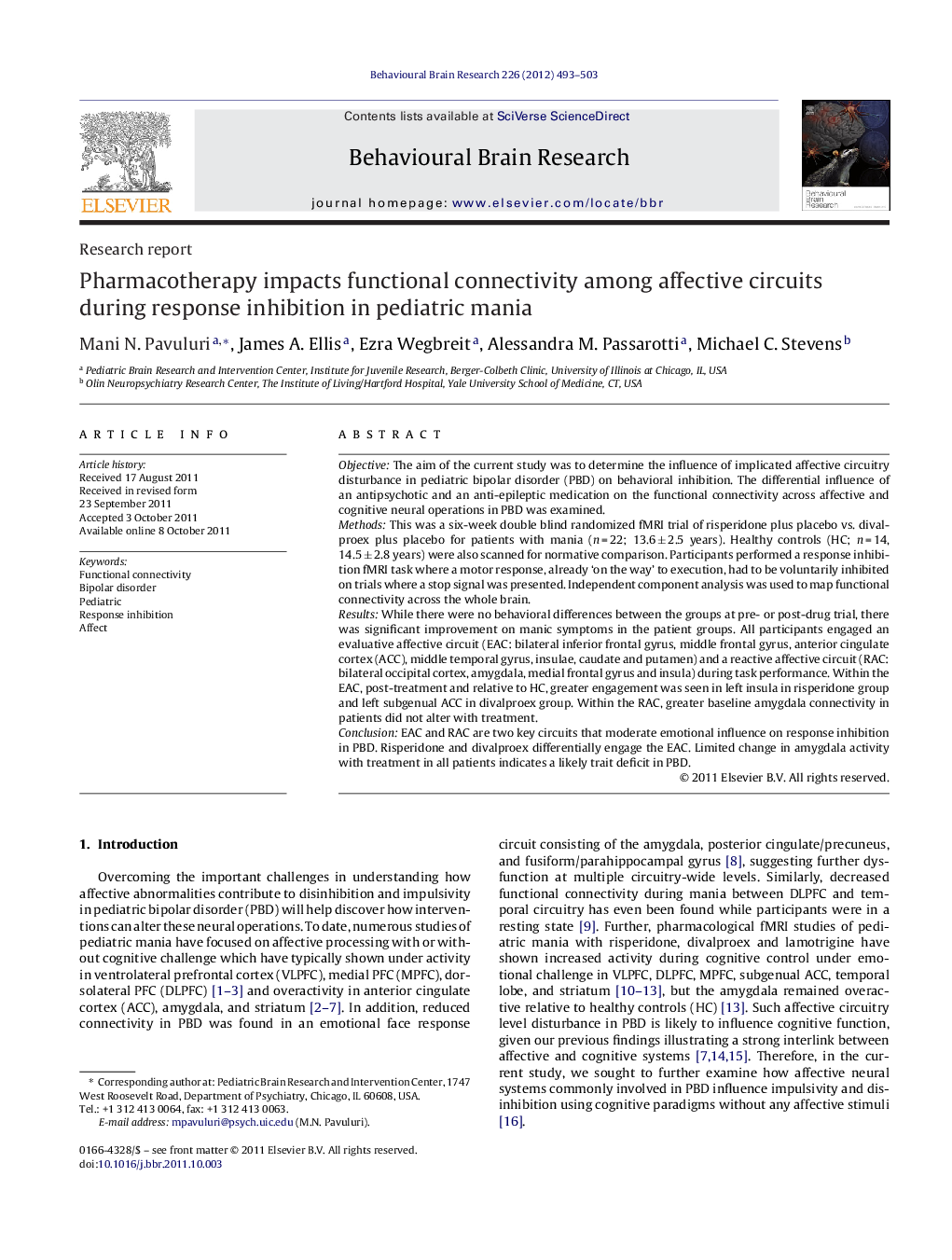| کد مقاله | کد نشریه | سال انتشار | مقاله انگلیسی | نسخه تمام متن |
|---|---|---|---|---|
| 4313621 | 1290002 | 2012 | 11 صفحه PDF | دانلود رایگان |

ObjectiveThe aim of the current study was to determine the influence of implicated affective circuitry disturbance in pediatric bipolar disorder (PBD) on behavioral inhibition. The differential influence of an antipsychotic and an anti-epileptic medication on the functional connectivity across affective and cognitive neural operations in PBD was examined.MethodsThis was a six-week double blind randomized fMRI trial of risperidone plus placebo vs. divalproex plus placebo for patients with mania (n = 22; 13.6 ± 2.5 years). Healthy controls (HC; n = 14, 14.5 ± 2.8 years) were also scanned for normative comparison. Participants performed a response inhibition fMRI task where a motor response, already ‘on the way’ to execution, had to be voluntarily inhibited on trials where a stop signal was presented. Independent component analysis was used to map functional connectivity across the whole brain.ResultsWhile there were no behavioral differences between the groups at pre- or post-drug trial, there was significant improvement on manic symptoms in the patient groups. All participants engaged an evaluative affective circuit (EAC: bilateral inferior frontal gyrus, middle frontal gyrus, anterior cingulate cortex (ACC), middle temporal gyrus, insulae, caudate and putamen) and a reactive affective circuit (RAC: bilateral occipital cortex, amygdala, medial frontal gyrus and insula) during task performance. Within the EAC, post-treatment and relative to HC, greater engagement was seen in left insula in risperidone group and left subgenual ACC in divalproex group. Within the RAC, greater baseline amygdala connectivity in patients did not alter with treatment.ConclusionEAC and RAC are two key circuits that moderate emotional influence on response inhibition in PBD. Risperidone and divalproex differentially engage the EAC. Limited change in amygdala activity with treatment in all patients indicates a likely trait deficit in PBD.
► Treatment effects with either risperidone or divalproex for PBD were investigated using novel functional connectivity methods.
► During response inhibition task, fronto-striatal and occipito-limbic networks were found to be dysfunctionally engaged in PBD prior to treatment.
► Both drugs failed to dampen disordered amygdala connectivity in the occipito-limbic network.
Journal: Behavioural Brain Research - Volume 226, Issue 2, 15 January 2012, Pages 493–503